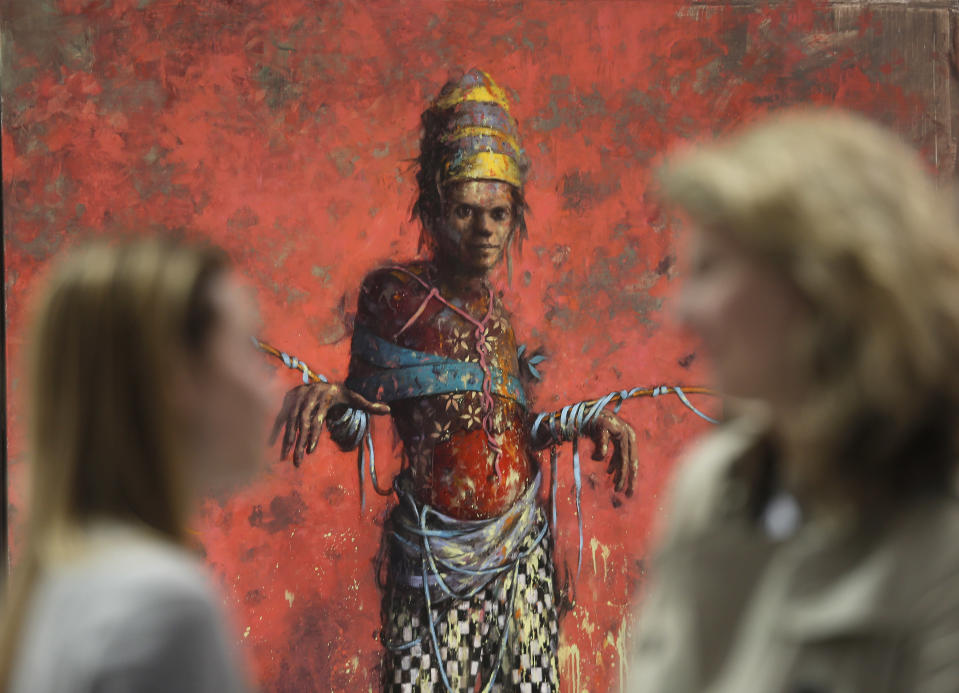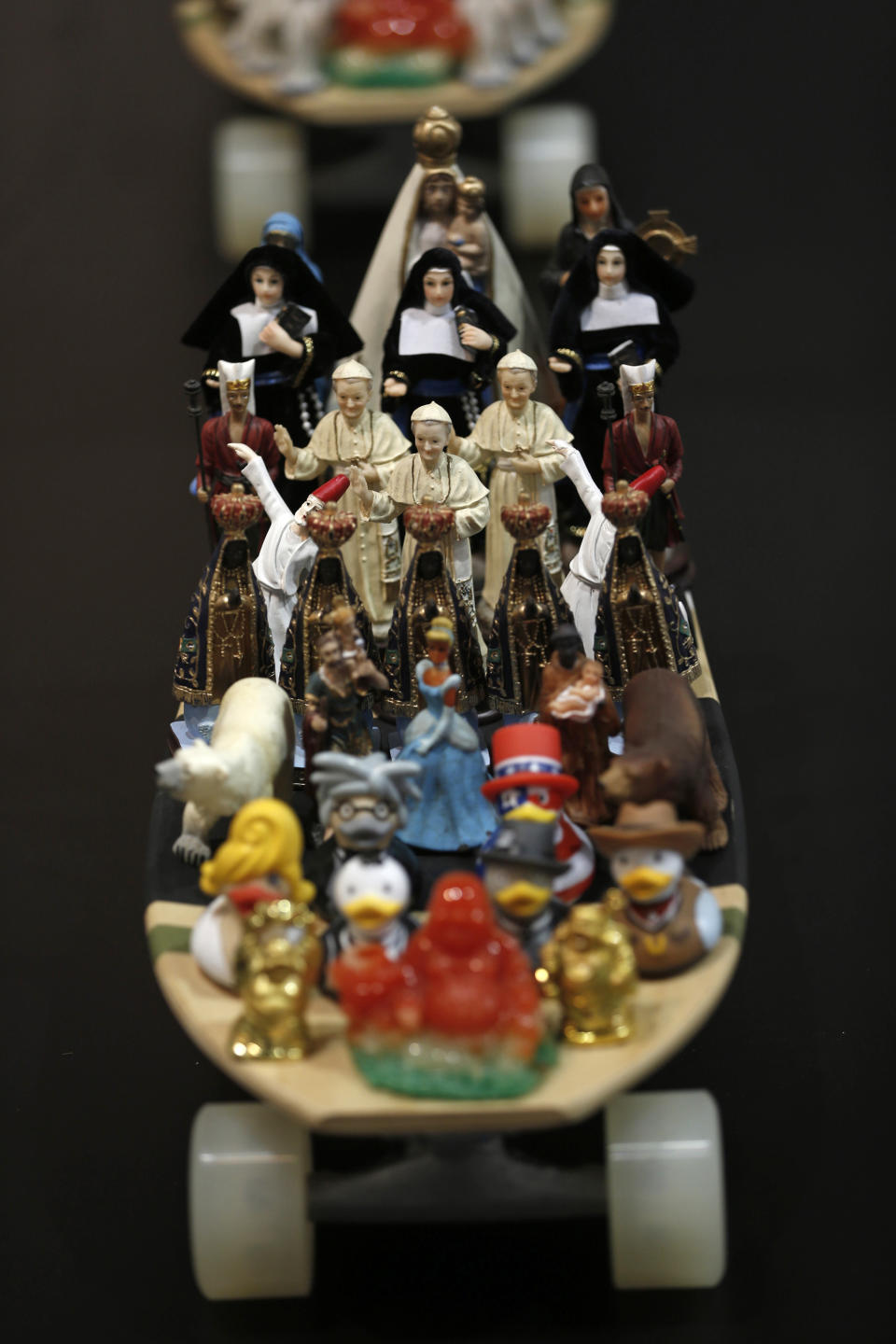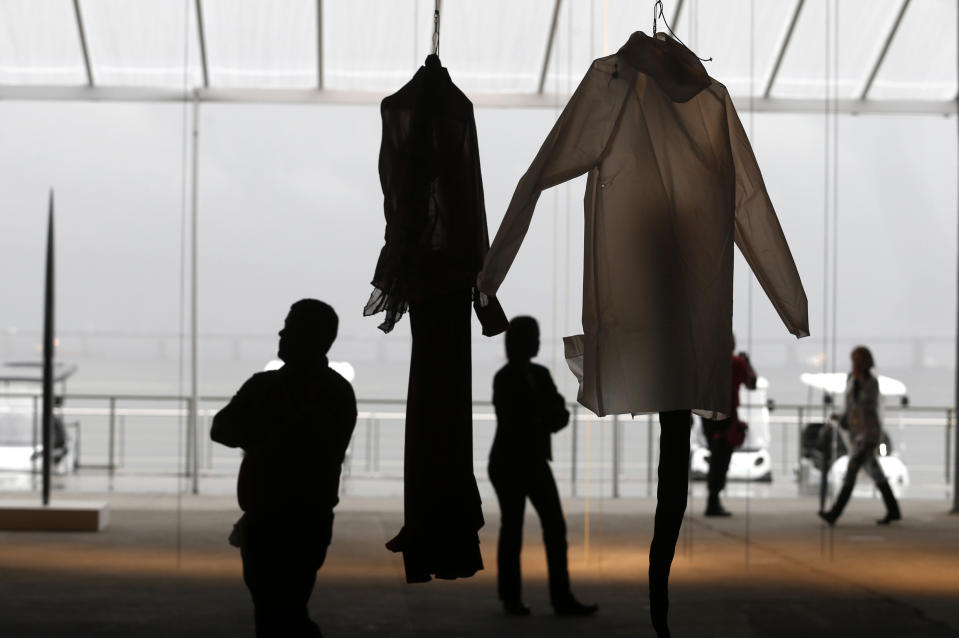ArtRio opens amid debate on Brazil's import taxes
RIO DE JANEIRO (AP) — Gallery owner Renato Gouvea Jr. stares at a wall full of art and laments what's missing.
Sure, his exhibition at ArtRio, which opened this week and is now among the world's top art fairs, is respectable. There are paintings from masters such as Chagall and Brazilian Di Cavalcanti. But Gouvea is more ambitious.
Holding him and other Brazilian collectors back are taxes, he says. The wealthy connoisseurs flocking to the Rio show are complaining about steep import tariffs on fine art that can almost double the price of pieces bought abroad, leading many collectors to simply leave their top works outside the country.
"A friend bought a (John) Chamberlain sculpture for $400,000 at the latest Basel show in Europe and couldn't wait to bring this cool piece back to Brazil," said Gouvea, an owner of the Arte57 gallery in Sao Paulo. "Then he found out what the import taxes would be. Today, that sculpture sits in a home he has in the U.S."
Lowering art taxes for super-rich collectors doesn't rank high on the government's list of priorities, especially following recent nationwide protests over the woeful state of public hospitals, schools and infrastructure average Brazilians get in return for sky-high income tax rates.
But proponents of lowering the tariffs say it's not just an issue for the wealthy, but for all art lovers of more modest means. That's because far fewer of the world's best works are getting into Brazilian museums. Museums worldwide rely on loans from private collectors, loans especially important in nations like Brazil, where a culture of charitable support for the arts is virtually unknown and government investment lacking.
"There is absolutely zero benefit for anyone from this very antiquated system we have in place," said Brenda Valansi, the Brazilian founder and director of ArtRio, who has made lowering the import tariffs a personal crusade. "Artists don't benefit, collectors don't benefit, the state doesn't even really benefit and the Brazilian public certainly doesn't."
Valansi met with Brazil's Culture Minister Marta Suplicy in March to argue against Brazil's taxes, which are also notoriously high for other imported goods.
At the ArtRio show, where the art is for sale but is also a massively popular exhibition for the non-buying public at large, Valansi is working to draw support from among world-class art dealers and billionaire collectors for help in persuading the government to lower combined federal, state and even municipal taxes that can add 50 to 70 percent to a piece's sales price. Import duties for art in the U.S. and most other countries range from 7 to 10 percent.
The taxes are a major worry for the 105 galleries from 14 countries participating at this year ArtRio, including London's White Cube, New York's David Zwirner and Galeria Cardi of Milan in hopes of tapping into a potentially lucrative market. The five-day show opened Thursday to the general public.
Imported art isn't the only sector that protectionist Brazil taxes heavily in an effort to stimulate and protect homegrown markets. The World Bank ranks Brazil's tax system as 156th globally in ease of payments and their burden. A medium-sized Brazilian business spends 2,600 hours each year just figuring out what it owes, almost three times as many hours spent in the next most inefficient nation, Bolivia, the bank said.
"I have never seen such high import taxes anywhere in the world," said Victoria Gelfand-Magalhaes, director of the Gagosian gallery's New York branch, who labeled the tariffs as "medieval." She was in Brazil to oversee the gallery's booth at ArtRio for the second subsequent year. "It really makes it prohibitive for people here to buy international art."
Gelfand-Magalhaes said it's unlikely her gallery will open a permanent presence in Brazil under the current tax regime.
White Cube opened one in Sao Paulo late last year despite the tax issue. But the London gallery's director of exhibitions, Tim Marlow, said the space is more about introducing White Cube's artists to the Brazilian public than immediately turning a profit.
"We have a lot of artists who just want to be there in Sao Paulo," he said. "If we can't place their work with Brazilian collectors, we'll place it elsewhere."
Under a deal hammered out in a committee representing Brazil's 27 states, some buyers at ArtRio and Sao Paulo's SP Arte fair are exempt from state import taxes, but federal duties still apply. With the exemption, import duties fall to around 15 percent, depending on the medium.
But only Rio and Sao Paolo residents are eligible for the tax relief and the art fairs have to fight every year to win the federal tax exemption because it's not automatically renewed.
Glenn Scott Wright, director of the Victoria Miro gallery that has an exhibit at ArtRio, said he's seen many potential Brazilian buyers leave his London-based gallery empty-handed because of the tariffs.
"Foreign galleries want to do business here," he said, "but the fiscal system has this mysterious and convoluted tax system that makes it hard for the world to do business in Brazil, and hard for Brazilians to interact with the outside art world."
___
ArtRio is open to the public Sept. 5-8
___
Jenny Barchfield on Twitter: www.twitter.com/jennybarchfield
Bradley Brooks on Twitter: www.twitter.com/bradleybrooks







